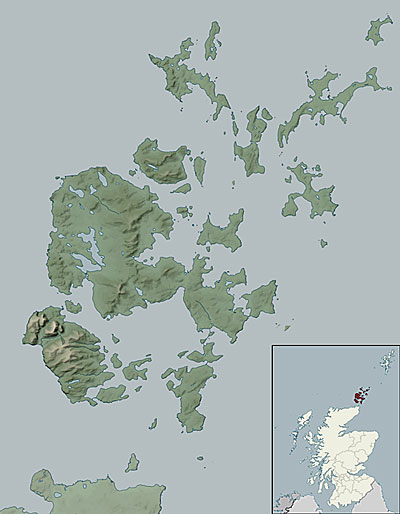Islands
Orkney is the group of islands that lie off the northernmost tip of Scotland.
The archipelago of Orkney consists of around 70 islands, although only 17 of these are currently inhabited. Orkney has a population of around 21,500. The largest island of the group is known as 'Mainland' (divided into West Mainland and East Mainland) and is the location of the two main towns of Orkney - Kirkwall and Stromness.
Orkney is almost totally absent of trees but, with a shoreline of approximately 500 miles, its beautiful sandy beaches and rugged sea cliffs more than make up for this.
In the summer months, Orkney enjoys long days, when the sun hardly sets. With clean air and awe-inspiring scenery, Orkney is a wonderful place to visit.
Orkney boasts a rich cultural heritage - impressive archaeology, including the Heart of Neolithic Orkney World Heritage Site, traditional folklore and music festivals, plus so much more. Orkney is also home to a large number of artists and craftspeople.
It is renowned for its locally produced food and drink - from quality seafood and organic beef to local cheeses - and of course, beers from the Orkney and Swanney Breweries, and the single malts from the Highland Park and Scapa distilleries.
Mainland
Orkney is perhaps best known for its archaeological heritage, and is home to one of Scotland’s seven UNESCO World Heritage Sites, known as the Heart of Neolithic Orkney. Jewel in the crown is the Neolithic village of Skara Brae, dating to around 3,100BC, closely followed by the magnificent circle of stones the Ring of Brodgar, the Standing Stones of Stenness and the Neolithic burial tomb of Maeshowe, which has the distinction of hosting the largest collection of Viking runic writing to be found outside the Nordic regions. With an average of three archaeological monuments per square mile, Orkney has much to offer.
There is so much more to entrance the visitor than archaeological sites, however. Empty beaches, panoramic vistas, quiet roads, international music and arts festivals and 5,000 years of culture and heritage all add up to a distinctive, innovative, vibrant and stimulating group of islands.
Scapa Flow
There is a wealth of history, stories and wildlife to experience in “the Flow”. Home to the British Home Fleet in both the first and second world wars, it was also used by the Vikings as a safe anchorage, and most of Orkney’s placenames can be traced back to these Viking roots.
Hoy
Hoy is Orkney’s second biggest island but has a population of only 400 people, who mainly live in the fertile, flat land in the south end of the island at Lyness and Longhope in South Walls. Lyness is home to the Scapa Flow Visitor Centre and Museum, which tells of the vital role Hoy and Scapa Flow played during both World Wars. The north end of the island has possibly Orkney’s most scenic spot, the remote and stunning Rackwick Bay, and an optional 4 mile walk to the famous rock stack known as the Old Man of Hoy, whilst Longhope, at the south end of the island, offers a completely different perspective of the island. Hoy has a wealth of wildlife, scenery and history and we can’t wait to share it with you.
Burray
Until 1944, Burray was a separate island with a thriving boat building and fishing industry, but the opening of the Churchill Barriers brought to an end these industries. Today it has a similar population to that of Hoy, and the main attraction on the island is the Fossil & Heritage Centre which tells the story of the building of the Barriers.
South Ronaldsay
In common with the islands of Burray, Glimps Holm and Lamb Holm, South Ronaldsay was an island separate from the Orkney Mainland until the Churchill Barriers were opened in 1944. The Barriers were built as a direct result of the loss of the ship HMS Royal Oak in 1939, and the subsequent visit and decision of Winston Churchill as First Lord of the Admiralty, to build permanent barriers offering protection from the eastern approaches of Scapa Flow. South Ronaldsay is Orkney’s fourth largest island, but its village St Margaret’s Hope is our third largest settlement. Today, the village is a thriving port with regular sailings of the car ferry MV Pentalina to the Scottish mainland.
Flotta
In common with many of Orkney’s islands, Flotta faced the threat of complete depopulation until North Sea oil was found in the 1970s, and the decision of the oil companies to pump crude oil ashore to Scotland. Bases in Orkney and Shetland were sought, with Flotta becoming the hub for the oil industry in Orkney. Before that, Flotta was ideally placed within Scapa Flow to act as a base for naval operations, and many wartime structures remain on the island.
Cava
The literal meaning of the island’s name is Calf Island, but alas there are no cattle – or people – on the island today. It was last home to two retired ladies who left in the 1980s and nobody has lived on the island since. It is home to a vast array of ground nesting birds. There are two beautiful sheltered bays – one to the west and one to the east both with small but completely deserted beaches.
Eynhallow
Another uninhabited island, Eynhallow is a reserve of the Royal Society for the Protection of Birds. Eynhallow, or Eyin Helga as the Norse knew it, means ‘Holy Island’, and the remains of a 12th century chapel and associated buildings can still be clearly seen. Learn about how Eynhallow became an island belonging to the human population of Orkney, rather than the mythical Finfolk.
Rousay
Only a 20 minute ferry ride from the Mainland of Orkney, Rousay is home to around 200 people, some of whom commute to Orkney’s capital, Kirkwall, every day. It was once marketed as “the Venice of the north” due to its rich archaeological heritage, much of which is conveniently situated close to the road.
Egilsay
Egilsay is a very small but thriving island with a population of around 24 people. Its main attraction is the ruinous St Magnus Church, and to its east is the site of the martyrdom of St Magnus, for whom the Cathedral was built in Orkney’s capital, Kirkwall. The Royal Society for the Protection of Birds own much of the island, and it is therefore an excellent area for wildlife spotting.
Wyre
An even smaller inhabited island than Egilsay, Wyre has a population of around 17. The island is home to Cubbie Roo’s Castle, a 12th century square keep castle, the oldest of its type in Scotland. Legend has it that Cubbie Roo was a giant, who used Orkney’s many islands as stepping stones.
Westray
“Queen o the isles”, Westray has a rich agricultural heritage. With beautiful sheltered bays, secluded beaches and miles of empty road, Westray hit the headlines in 2009 when the Orkney Venus, locally known as the ‘Westray Wife’ was found at the archaeological site the Links of Noltland. Believed to be the oldest representation of the human form found in Scotland, it is available to view in the island’s heritage centre in Pierowall, the main village of the island.
Papay Westray
Locallay known Papay, this small island off the tip of Westray boasts not only the oldest archaeological site in Orkney - the Knap of Howar but also the shortest scheduled flight in the world. Scheduled at just under 2 minutes but it has been done in just 53 seconds!
Shapinsay
Shapinsay was completely redeveloped by Colonel David Balfour in the 1840s to create a grid of 10-acre fields across the island. He was also responsible for developing the village in the island, Balfour Village, and he built the imposing Balfour Castle. A ‘calendar house’, the Castle has 12 outside doors, 52 rooms and 365 window panes. Balfour Castle is now an exclusive members-only hotel, the northern-most Castle hotel in the world.
Stronsay
Stronsay’s village, Whitehall, once boasted the longest bar north of Inverness, dating from the days of the herring industry. Stronsay was once a boom town as for six weeks over the summer from the 1880s to the First World War the island’s population of around 1200 was swelled to well over 5000 as the fishing fleets and gutter women descended to take advantage of the ‘silver darlings’, as the herring were known. Today, the population is a much more modest 370.
Sanday
Sanday is well named, and abounds with mile upon mile of unspoilt, open beaches offering complete privacy. Its fertile agricultural land is rich in both man-made and natural history, and it is often regarded as one of Orkney’s most beautiful islands.
Eday
Eday lies at the centre of Orkney’s North Isles, and is at the forefront of Orkney’s renewable energy industry. It is from here that the yellow sandstone used in the construction of St Magnus Cathedral in Kirkwall was sourced, and the island is rich in peat deposits and exported this rich natural resource throughout Orkney until well into the 20th century. The Calf of Eday lies to the north east of the Island and is home to a large cormorant colony.
North Ronaldsay
North Ronaldsay is Orkney’s most northern island, and has a thriving population of around 60 people. It is home to the North Ronaldsay Bird Observatory, testimony to its importance as a bird reserve. It is famous for its rare breed sheep, the North Ronaldsay Sheep, who are fed year-round on seaweed, giving the mutton a very distinctive flavour.


